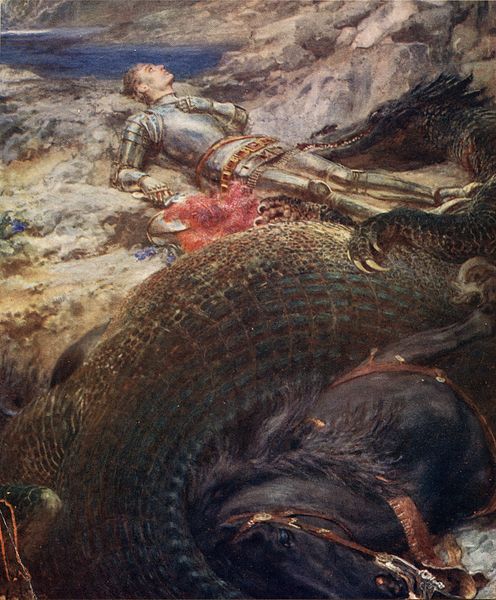 |
| Image credit: Wikimedia Commons |
Sarah Pride, the author of today's post, graduated from Patrick Henry College in 2007 with a degree
in Literature and an undeclared minor in History. Her personal mission
is to illuminate the world with beauty, goodness and truth, and to help
build organizations that do the same.
She has written a feature film screenplay and a half-dozen short films,
as well as quite a few short stories, and is currently several chapters
into the first book of her epic trilogy.
Creativity, so the myth goes, is a
mystic force that spurts forth spontaneously. A divine spark
possesses the artist and brings him outside himself to see the world
with fresh eyes. Once the influence passes, it leaves the artist a
forlorn and wild-eyed husk. He is more than a little insane.
This concept appeals because it means
that we are not responsible when we do not produce. We were not
“inspired.”
The trouble with the theory, of course,
is that many authors have produced a great deal, inspired by little
more than their need to survive. William Shakespeare, for example,
wrote more than three dozen plays and a great deal of poetry. Charles
Dickens wrote his novels in monthly installments. Just as any
craftsman learns basic facility in his tools and an eye for what is
good and bad in his field, so we writers can grasp principles to take
control of our creative processes.
Today, I am going to write about the
fundamental qualities of conflict and change, the principles that
drive your plot. Basically, if nothing changes in our characters or
in their environment from the start to the end of a page, we do not
have a story at all. We have dead space. Conflict drives that
change—either from within our characters or from their
surroundings.
For example, consider the following
exchange:
The queen swept
down the hallway, raising her hand to stop a maid who was rushing
past clutching an armful of books. “Flo, fetch me a glass of
water,” she commanded. The girl bobbed a curtsey. “As you please,
Your Highness!”
Dead space. But then, we alter it:
The queen swept
down the hallway, brow furrowed. At last, she spotted a maid darting
out of the library with an armful of books. “Ah, Flo!” she
exclaimed. “The king’s fever is running high. Please fetch him
another glass of water.” The girl gasped and bobbed a quick
curtsey. “If you please, Your Highness – the vizier told me to
bring these books to the Hall of Justice immediately.”
Suddenly, we have conflict. The
vizier’s and the queen’s wills in that moment stand in
opposition, and someone is going to have to change.
One way to take control of a story,
then, is to plot the points of change. Consider how the main
protagonist and his world will be different at the end of the story
than at the beginning. Once we know our starting and ending points,
we can mark out a series of necessary steps between, each sparked by
a conflict inside characters, between them, or between them and their
environment.
Once we get into this process, we find
immediately that we have to know our characters intimately. We have
to know the stimuli that will cause them, as individuals, to change
in their own unique ways. What spells “love” for one real-life
person can mean “hate” for another. So it must be for our
characters. But that is a topic for another post.

No comments:
Post a Comment